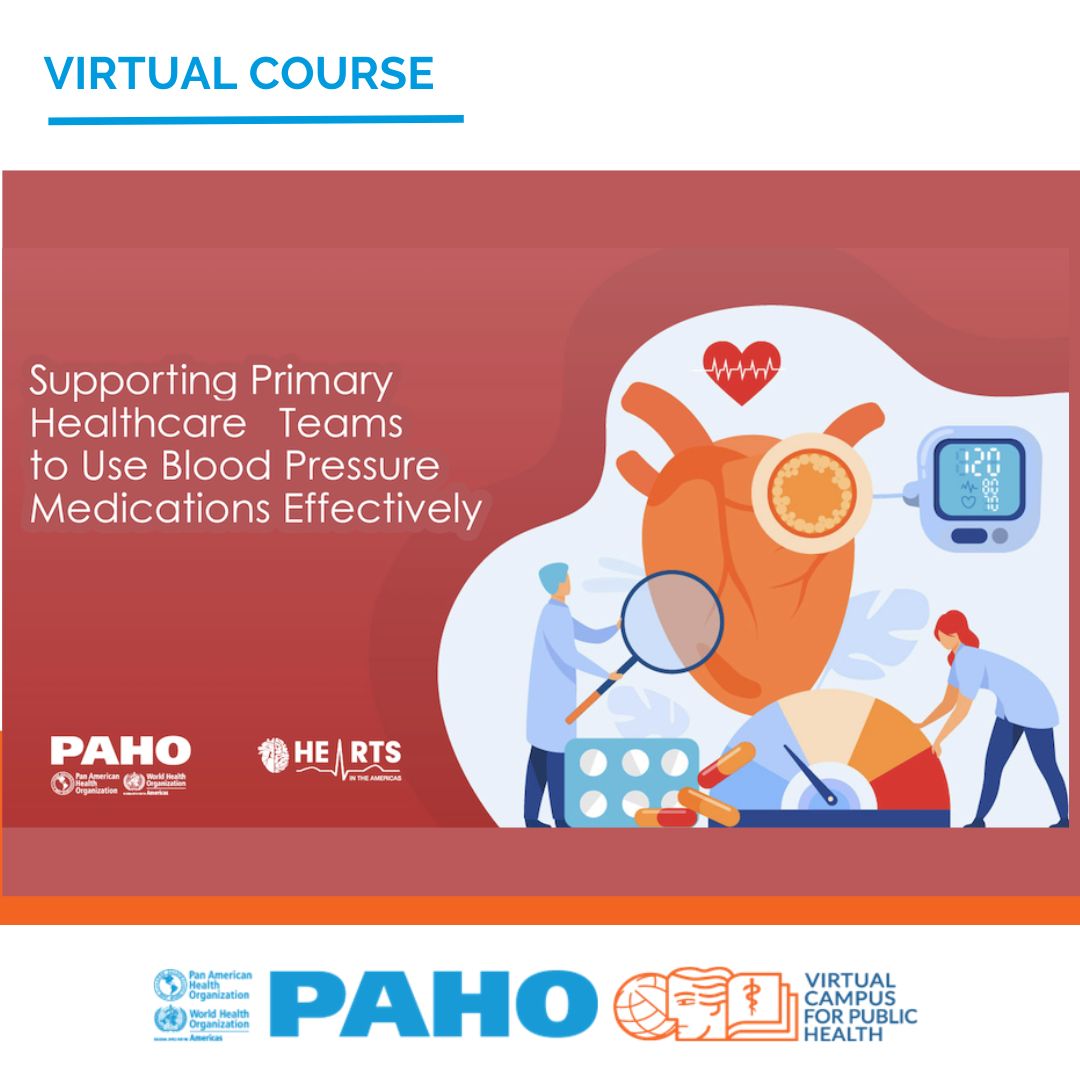Supporting Primary Healthcare Teams to Use Blood Pressure Medications Effectively (ENG) -2023

Background:
Cardiovascular disease continues to be the leading cause of premature morbidity and mortality globally. According to the 2022 Global Burden of Disease Report, high systolic blood pressure remains the leading modifiable risk factor globally for attributable premature cardiovascular deaths, accounting for 10.8 million deaths and 11.3 million deaths overall in 2021 and has been particularly linked to ischemic heart disease and stroke-related deaths. Cardiovascular disease is also the leading cause of premature morbidity and mortality in the Americas Region.
Improvement in blood pressure control has occurred. However, part of the improvement seen in the last two decades has slowed significantly and, in some cases, even reversed.
The Pan American Health Organization through HEARTS in the Americas Initiative supports countries to develop their hypertension treatment protocols based on the latest 2021 WHO Guideline for the pharmacological treatment of hypertension in adults. Likewise, the initiative emphasizes the team care approach and supports the training and education of all members of the primary healthcare team, including physicians, nurses, or non-physician health workers (NPHW), to increase control of hypertension in PHC centers and to use antihypertension medication properly and effectively.
This virtual course aims to support clinicians using properly blood pressure medications, highlighting the newest WHO recommendations and the possible side effects of the main group of antihypertensive drugs.
Intended audience:
This course is intended for primary healthcare teams members responsible for prescribing, titrating, and following up hypertensive patients. Primary care physicians, nurses, nurse assistants, nurse practitioners, allied health professionals, and medical, nurses and allied health science students will benefit from taking this course. In addition, teachers of health science programs, which include medicine and nursing, are recommended to embed the course, and make it available for their students or to incorporate it into their curriculum.
Course format:
The course is placed on the platform of the Virtual Campus for Public Health of PAHO/WHO available 24 hours a day, 7 days a week, in a self-administered modality according to the participant’s own pace, individually or as part of professional programs and/or educational meetings in the workplace.
The course issues a certificate with 16 academic hours that can be downloaded automatically once the students have met the course completion requirements, including passing the evaluation with 70% or more and completing the VCPH Quality Survey.
General objectives:
- To understand which common side effects of BP medications are dose-related and can be minimized with dose adjustment.
- To understand which common side effects of BP medications, require medication discontinuation.
- To understand how to deal with basic lab abnormalities including hyponatremia, hyperkalemia, hyperuricemia, and renal insufficiency.
- To increase comfort level with use of spironolactone.
General skills:
At the end of this course, health care providers who titrate BP medications (physicians, pharmacists, and nurses) should be able to more comfortably prescribe and titrate thiazide-type diuretics, ACEIs, ARBs, and CCBs, and deal with common side effects and lab abnormalities. This will facilitate optimal use of preferred BP medication protocols.
